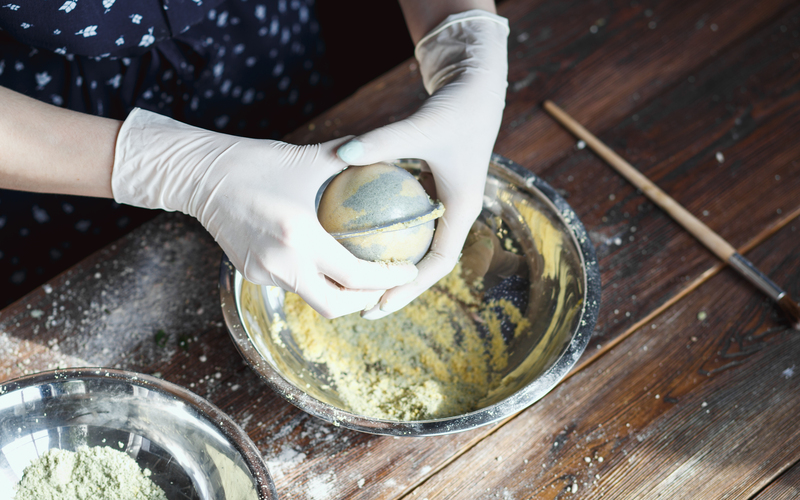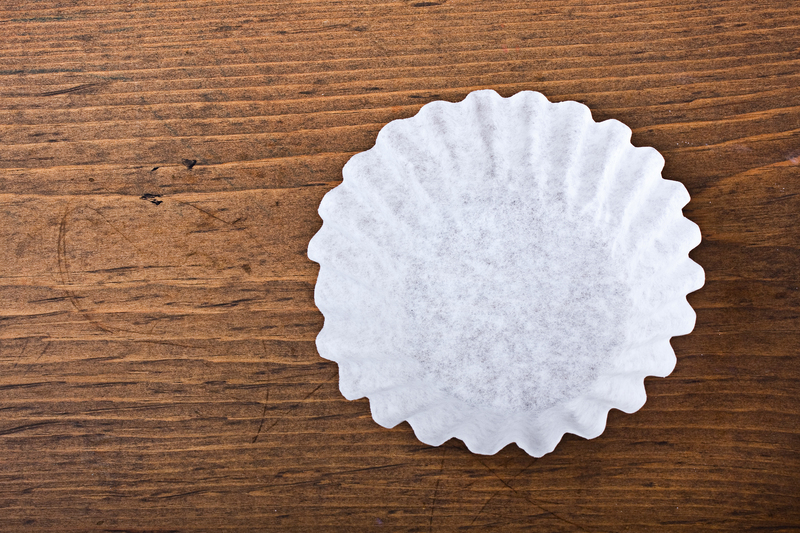Thoroughly Clean Your Window Sills to Eliminate Mould
Posted on 24/09/2025
Thoroughly Clean Your Window Sills to Eliminate Mould: A Step-by-Step Guide
Mould on window sills is a common problem for homeowners, renters, and businesses alike. Often unnoticed until it becomes unsightly or triggers allergies, mould is not simply an aesthetic issue--it is a genuine health hazard. This comprehensive guide will show you how to clean your window sills thoroughly to eliminate mould, prevent its return, and reclaim a healthier indoor environment. Whether you call it mildew, black mould, or simply mould, it's time to get your windows sparkling and safe.
Why Does Mould Grow on Window Sills?
Mould thrives in moist, warm spaces. Window sills are particularly prone due to:
- Condensation that gathers on glass then drips onto the sill.
- Poor ventilation, allowing humidity to accumulate.
- Lack of regular cleaning, leaving organic debris as food for mould spores.
- Windows in bathrooms, kitchens, or basements--areas with routinely damp air.
Understanding why mould develops on window sills is the first step toward successful removal and long-term prevention. Proper cleaning, regular maintenance, and addressing the sources of excess moisture are all essential in keeping your window sills mould-free.

Health Risks Associated with Mould on Window Sills
Exposing yourself to mould spores can cause a variety of health problems, especially if you are sensitive to allergens or have a weakened immune system. Common symptoms include:
- Eye, nose, and throat irritation
- Respiratory issues and coughing
- Skin rashes
- Asthma flare-ups
- Headaches and fatigue
Children, the elderly, and those with pre-existing conditions are:
- More vulnerable to mould-related illnesses.
- Prone to developing persistent allergies or respiratory issues if exposed continually.
How to Thoroughly Clean Window Sills to Remove Mould
Gather Your Supplies
To deep clean mould from window sills, you'll need:
- Protective gloves (rubber or disposable)
- Face mask (to avoid breathing spores)
- Goggles (optional, but recommended)
- Microfiber cloths or old rags
- Soft-bristled brush or old toothbrush
- Vacuum cleaner with HEPA filter (if available)
- Spray bottle
- Bowl or bucket
- White vinegar (natural mould killer)
- Baking soda (optional, for extra scrubbing power)
- Hydrogen peroxide 3% (for stubborn cases)
- Mild detergent or dish soap
- Paper towels for disposal
Tip: Always clean window sills on a dry, breezy day when you can open windows for maximum ventilation and swift drying!
Step 1: Vacuum Up Loose Mould Spores & Debris
Before getting anything wet, use a vacuum cleaner (preferably with a HEPA filter) to remove dust, loose spores, and debris from the sill, cracks, and frame. This minimizes the spread of mould spores during the wet cleaning phase. Immediately dispose of the vacuum bag or empty and clean the canister outdoors.
Step 2: Prepare Your Cleaning Solution
For light to moderate mould:
- Mix equal parts white vinegar and water in a spray bottle.
For extra scrubbing power on stuck-on mould or mildew, sprinkle baking soda directly onto the surface and spray with vinegar solution. It will fizz and help lift grime.
For stubborn or recurring black mould:
- Use undiluted white vinegar or 3% hydrogen peroxide. Do not mix vinegar and peroxide in the same bottle!
Tip: Avoid bleach unless you're dealing with non-porous surfaces; it can't penetrate wood or porous plastics and may cause harmful fumes indoors.
Step 3: Scrub the Window Sill and Frame Thoroughly
- Spray the cleaning solution generously over the entire window sill, paying extra attention to crevices and the bottom edges, where mould likes to hide.
- Let the solution sit for at least 10-15 minutes. This dwell time is crucial--it allows the acid to break down mould and hinder regrowth.
- Scrub the area with a soft brush or toothbrush. Use a microfiber cloth for flat surfaces, and ensure you reach all corners and grooves.
- Wipe away the loosened mould with a clean, damp cloth. Rinse the cloth frequently under running water.
Repeat steps if stains or dark patches remain. For severe infestations, repeat the process up to three times or opt for hydrogen peroxide as a final measure.
Step 4: Rinse and Dry Thoroughly
Using a clean, damp cloth, wipe the sill to remove any residue of cleaning agents or loosened dirt. Think of this as a final rinse, leaving no food source for mould to return.
Dry the window sills thoroughly with paper towels or a dry microfiber cloth. Mould cannot thrive on dry surfaces--so this is a crucial step!
Step 5: Dispose of Used Materials Properly
Safely discard all used paper towels, disposable gloves, and rags, sealing them in a plastic bag before throwing away. Wash any reusable cleaning tools and cloths in hot water and dry completely before storing. This prevents accidental cross-contamination or new mould growth on your cleaning equipment.
How to Prevent Mould from Returning to Your Windows
Cleaning window sills thoroughly for mould is only half the battle. Effective prevention is the long-term solution!
Control Moisture and Humidity
- Ensure windows are properly sealed and repair leaks promptly.
- Open windows regularly to maximize airflow, especially after cooking or showering.
- Use dehumidifiers during humid months--or in high-risk areas like basements.
- Wipe down window glass and sills after heavy rain, snow, or whenever condensation is visible.
Enhance Air Circulation
- Install exhaust fans in kitchens, bathrooms, and laundry rooms to reduce moist air buildup.
- Keep furniture and curtains at least a few inches away from windows to facilitate airflow.
Routine Cleaning Is Essential
- Wipe down window sills and frames weekly, especially during rainy seasons.
- Vacuum regularly around window areas to keep dust (and therefore potential mould food) at bay.
- Check and maintain caulking around window frames to stop leaks before they start.
Natural Remedies vs. Chemical Solutions for Window Sill Mould
Many homeowners prefer natural cleaning agents like white vinegar and baking soda for mould removal. These options are cost-effective, safe for children and pets when thoroughly rinsed, and highly effective for mild to moderate growth.
For persistent or large outbreaks, commercial mould removers or a diluted bleach solution (on non-porous surfaces only) may be necessary. Always read and follow label instructions, ventilate the area, and use gloves!
Avoid these common mistakes:
- Painting over window sill mould--This only hides the problem and mould will grow back.
- Using dry cloths alone--This will only move spores around and does not kill them.
- Skipping protective gear--Protect yourself from potential allergens and irritants!
When to Call in the Professionals
If you notice any of the following, it may be time to consult a professional mould remediation service:
- Mould returns quickly after cleaning
- Large areas (>1m?) are affected
- Mould appears inside wall cavities, insulation, or in complex double-glazed units
- Persistent musty odour that does not diminish after cleaning
Professional window mould cleanup includes advanced cleaning, moisture assessment, and long-term prevention recommendations.
FAQs: How to Remove Mould from Window Sills
- Is window sill mould dangerous?
- Yes, especially for children, the elderly, and allergy sufferers. Prompt removal is crucial to minimize health risks.
- What kills mould permanently on window sills?
- White vinegar and hydrogen peroxide are proven to kill mould at the roots, while regular drying and cleaning prevent regrowth.
- Can I use household bleach to clean mould?
- On non-porous surfaces like plastic and metal, yes, but always ventilate well. Vinegar is preferable for wooden sills and more environmentally friendly.
- How often should I clean window sills to stop mould?
- Wipe down every 1-2 weeks, especially in wet seasons or steamy environments.

Conclusion: Clean Window Sills Lead to a Healthier Home
Eliminating window sill mould requires diligence, the right cleaning techniques, and a focus on prevention. Keeping your living space mould-free will enhance your air quality, protect your home's integrity and value, and ensure the health of all who live or work within.
If you follow our step-by-step guide for thoroughly cleaning window sills to get rid of mould, you'll enjoy sparkling, healthy windows year-round. Don't wait until you see black stains--make window sill cleaning part of your regular home care routine.
Helpful Resources and Further Reading
Take care of your windows and they'll take care of you. Make "Thoroughly Clean Your Window Sills to Eliminate Mould" your mantra for a happier, healthier household or workspace--today, and in the seasons to come.





